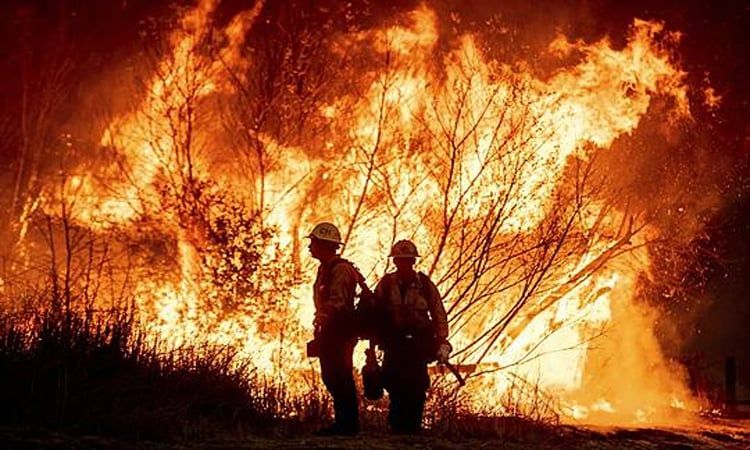New Wildfire Near Los Angeles Forces Tens of Thousands to Evacuate Amid Fierce Conditions

A new wildfire erupted north of Los Angeles on Wednesday, rapidly spreading to cover more than 8,000 acres (3,200 hectares) and forcing tens of thousands of residents to evacuate.
The blaze, which ignited near Castaic Lake, comes on the heels of two deadly fires that devastated the region, further heightening tensions as the area grapples with a string of catastrophic wildfires.
Strong, dry Santa Ana winds fanned the flames, pushing dangerous embers ahead of the fire and creating a growing concern that it could spread even further. The fire was quickly dubbed the Hughes Fire, and authorities issued mandatory evacuation orders for 31,000 people around the lake, located approximately 35 miles (56 kilometers) north of Los Angeles, close to Santa Clarita. Another 23,000 people were also under evacuation warnings, according to Los Angeles County Sheriff Robert Luna.
As the greater Los Angeles area continues to recover from the devastating impact of recent fires that claimed more than two dozen lives and destroyed thousands of structures, the new blaze has further tested the region’s resilience. Sheriff Luna urged all residents within the fire zone to heed evacuation orders, stressing the importance of safety after previous fires saw tragic consequences for those who failed to evacuate promptly.
Television footage showed police driving through neighborhoods, urging residents to leave immediately. Among those affected was the Pitchess Detention Center in Castaic, where around 500 inmates were being moved to a neighboring facility. Another 4,600 inmates at nearby jails were sheltering in place, though evacuation buses were on standby in case the situation worsened.
The fire has caused significant disruptions, with a section of the I5 freeway— a key highway running along the West Coast— closed due to the proximity of the flames. Meanwhile, firefighting efforts have ramped up, with helicopters and planes dropping water and retardant on the fire. Two massive Super Scooper amphibious planes, capable of carrying hundreds of gallons of water, have been deployed, along with crews from the Los Angeles County Fire Department and Angeles National Forest.
Cal Fire’s Brent Pascua noted that the conditions were especially volatile, with high winds, low humidity, and dry brush combining to fuel the fire’s rapid spread. Meteorologist Daniel Swain expressed concern about the fire’s potential to reach Ventura County, describing the area as an almost continuous fuel bed that could intensify the blaze under the influence of strong northeast winds.
Despite January typically being within the region’s rainy season, Southern California has seen little rainfall in the past eight months, leaving vegetation dangerously dry and creating the perfect conditions for the wildfire to rapidly gain strength.
The situation remains dire, and with the potential for the fire to grow even larger, officials are working tirelessly to contain it and prevent further destruction.





